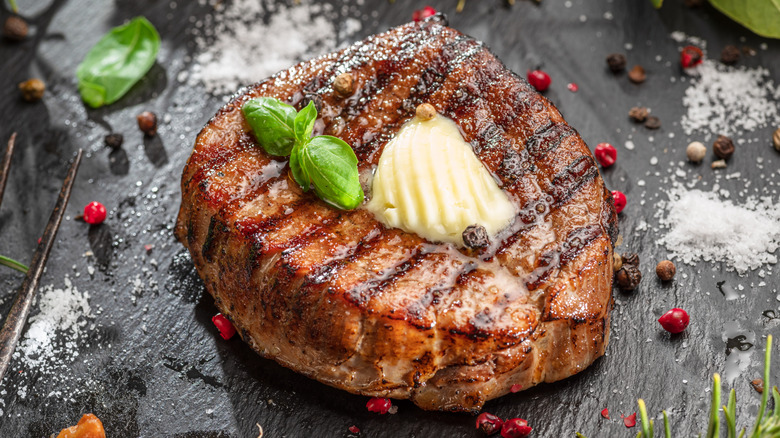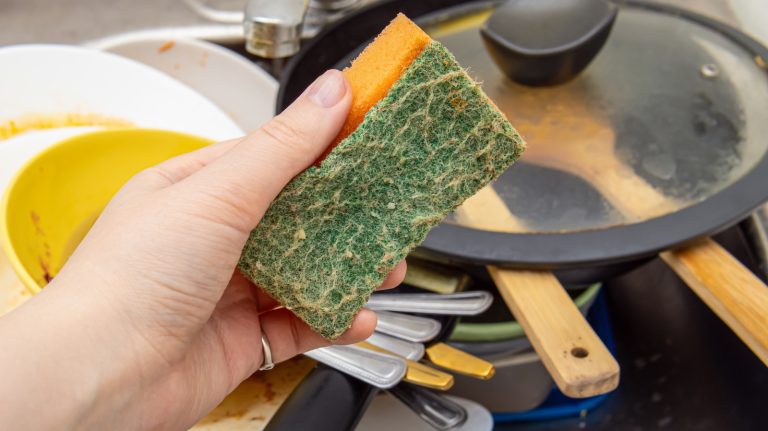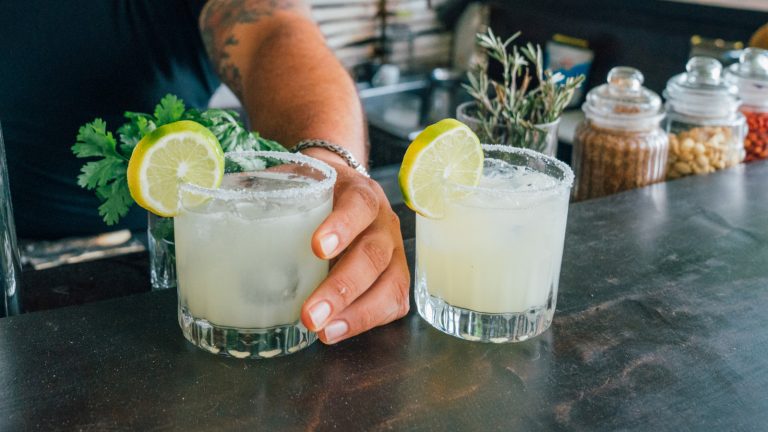There are plenty of sauces to boost your steak meal with different flavor profiles and levels of complexity. But if you’re looking for an easy way to elevate your classy weeknight dinner, Kathleen Smith, home cooking expert and recipe developer at Gonna Want Seconds, had one of the best suggestions.
“Butter, minced garlic, fresh thyme, and a splash of Worcestershire sauce,” Smith suggested to Food Republic. “The butter adds richness, the garlic and thyme bring savory depth, and the Worcestershire adds just enough tang and umami to round it all out. It melts over the steak beautifully and gives every bite that steakhouse finish.” All you have to do is melt butter in a pan, let the garlic and thyme saute for a bit, then toss in the Worcestershire sauce just before serving.
Sauteing your garlic in butter over a low temperature ensures it loses some of its raw bite and prevents your butter from burning, one of the common mistakes everyone makes with homemade steak sauce. As a simple rule for fresh herbs, woody types – like fresh thyme — need more time to release their flavors and soften up, so always cook them with your aromatics. If you don’t want much tang, try letting your Worcestershire simmer for a bit to caramelize its sugars and round out its flavor profile.
Why this sauce works and how to make your own
Any great, easy steak sauce needs three distinct components to truly elevate your meal. Fat, whether from oil, butter, or tallow, moistens your meat while improving its heartiness, rendering even the leanest cuts satisfyingly delicious. Aromatics enhance the flavor of the fat itself and should always complement the meat in question. Finally, an additional ingredient that adds a new type of taste — such as salty, sweet, or acidic — expands the flavor profile of your whole dish to make it taste steakhouse-worthy.
Butter adds richness and tallow more beefiness, but even a simple drizzle of olive oil over a finished cut can take homemade steak to the next level. If you’re working with a lean cut that’s already plenty beefy, lean towards richer fats to round out its flavor. If, however, you’re working with something that has a good deal of marbling (like ribeye), then try to use a smaller amount of something rich in its own flavors to avoid making it too greasy.
Garlic and woody herbs are one of the most classic steak seasoning combinations for a reason. The headiness of both infuses each muscle fiber until they’re bursting with taste. If, however, you want them to double as a garnish, sage fries up wonderfully in butter and provides a crunchy texture similar to flaky sea salt. Finally, always opt for a special, final ingredient that’s heavy in umami — tomato paste, mushrooms, or miso, to name only a few. With an umami-rich sauce, it’s all but impossible to walk away from a steak dinner with anything but total satisfaction.






